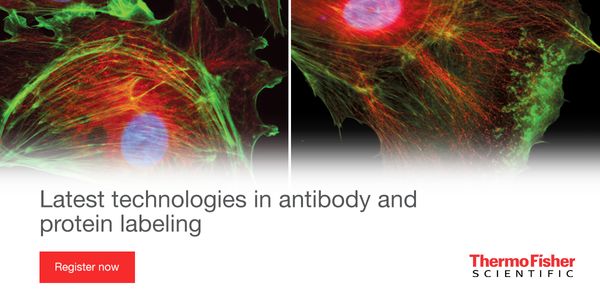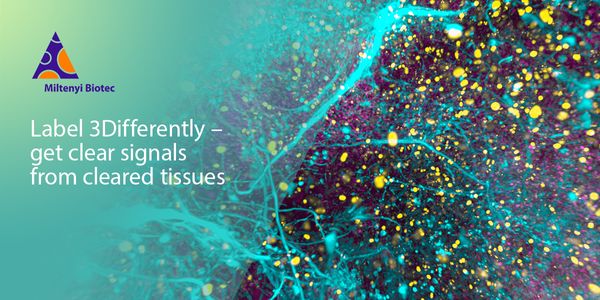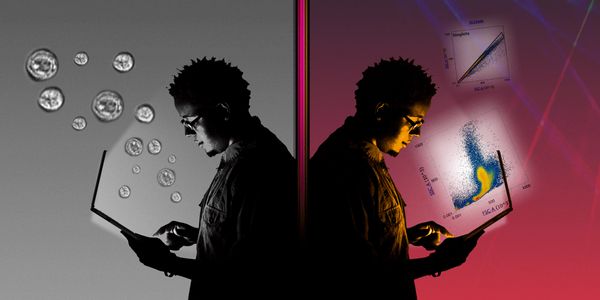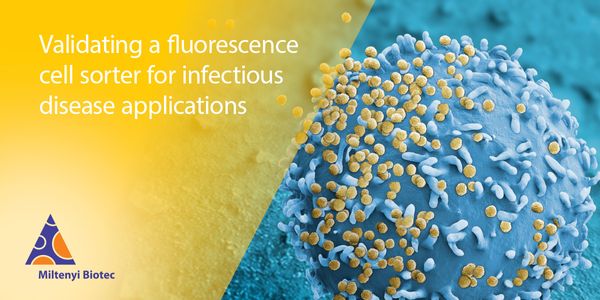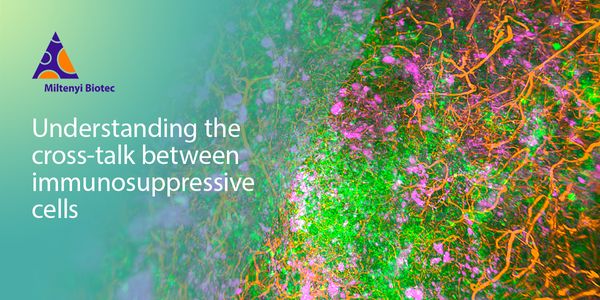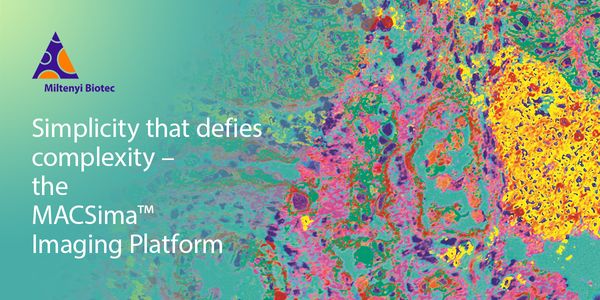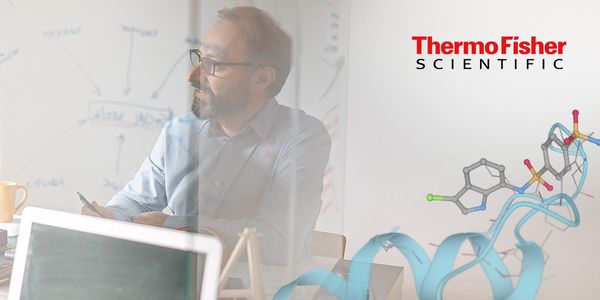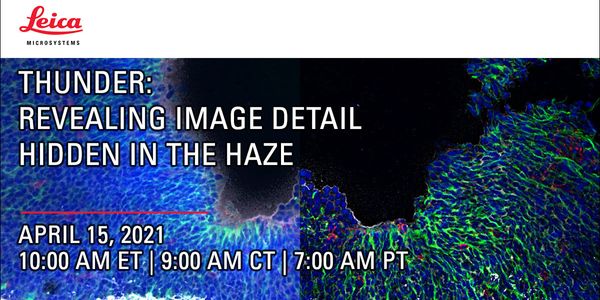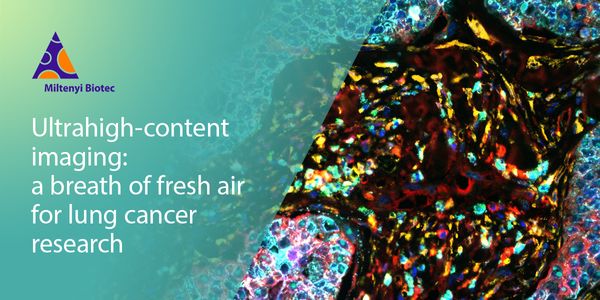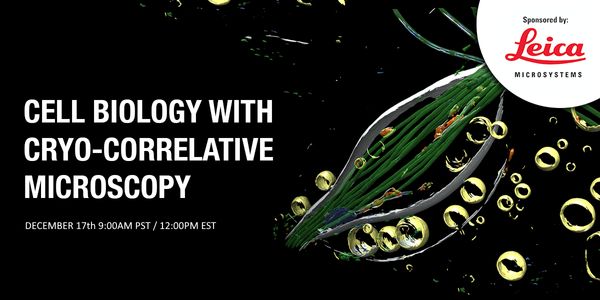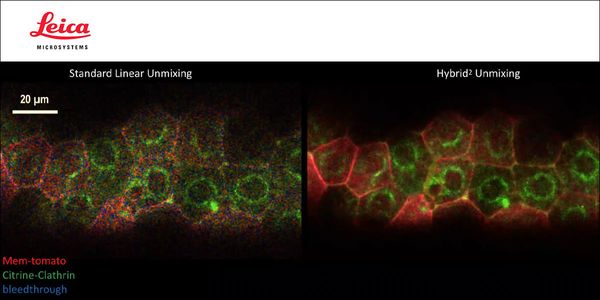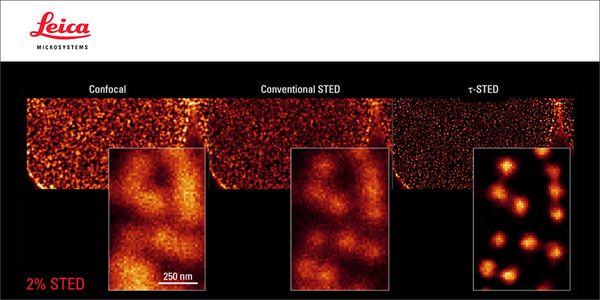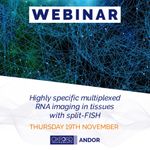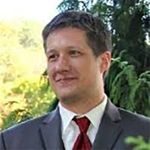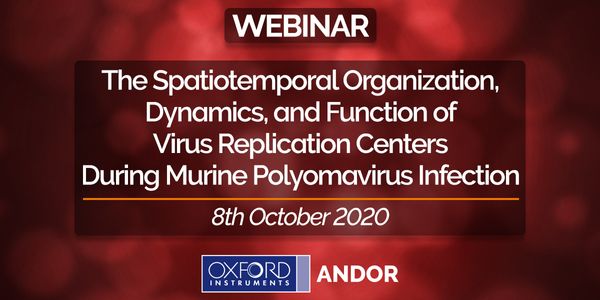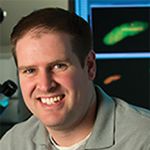Fluorescent microscopy
Fluorescent microscopy is an optical technique utilizing fluorescence in place of (or in addition to) other light sources. Fluorescent microscopy is used to study organic and inorganic substances by harnessing fluorescence to generate an image.
-
NOV 10, 2021 | 10:00 AMDate: November 10, 2021 Time: 10:00am PST Conjugated antibodies and proteins are some of the most powerful and commonly used probes currently used in life sciences research. Understanding th...NOV 04, 2021 | 8:00 AMDate: November 4, 2021 Time: 8:00am (PDT), 11:00am (EDT) The promise of tissue clearing techniques in combination with 3D-immunofluorescence (IF) microscopy is revolutionary. Complex biologi...OCT 27, 2021 | 8:00 AMDate: October 27, 2021 Time: 8:00am (PDT), 11:00am (EDT) Learn about how brightfield images can take your flow cytometry data to the next level. Join Dr. Cora Chadick, Technical Director, as...SEP 23, 2021 | 8:00 AMDate: September 23, 2021 Time: 8:00am (PDT), 11:00am (EDT) The tumor microenvironment (TME) comprises complex cellular and structural features. The processes and interactions within the TME...AUG 31, 2021 | 8:00 AMDate: August 31, 2021 Time: 8:00am (PDT), 11:00am (EDT) Given its ability to isolate pathogens, nuclei, and immune cells for downstream applications, cell sorting is an essential tool for im...Speaker: Kaitlin Didier , Megan Varnado , Marissa Fahlberg , Matt Riddle , Elane Reyes-AvilesSponsored By: Miltenyi BiotecAUG 26, 2021 | 7:00 AMDate: August 26, 2021 Time: 7:00am (PDT), 10:00am (EDT) Pancreatic ductal adenocarcinoma (PDAC) is a fatal disease with rising incidence and a remarkable resistance to current therapies. In t...JUN 16, 2021 | 8:00 AMDate: June 16, 2021 Time: 8:00am PDT The MACSima™ Imaging Platform is the only complete solution for ultrahigh-content imaging of hundreds of markers, allowing you to understand the tu...MAY 19, 2021 | 8:00 AMDate: May 19, 2021 Time: 8:00am PDT Cellular cryo-electron tomography is a high-resolution technique that enables imaging of the molecular machinery of a cell at close-to-native conditions....Speaker: Alex RigortPresented at: Thermo Fisher Scientific - Electron Microscopy Webinars
Sponsored By: Thermo Fisher ScientificMAY 13, 2021 | 8:00 AMDate: May 13, 2021 Time: 8:00am (PDT), 11:00am (EDT) Antibodies are the most rapidly growing form of therapeutic. High-throughput methods of characterization are essential as companies and r...APR 15, 2021 | 7:00 AMDate: April 15, 2021 Time: 7:00am (PDT), 10:00am (EDT) In widefield fluorescence microscopy both the contrast and resolution of a captured image is corrupted by light collected from adjacent...MAR 31, 2021 | 8:00 AMDate: March 31, 2021 Time: 08:00am PST CytoFLEX SRT has enabled researcher lead self-service sorting. The need for a cell sorting expert to setup and maintain the sorter status is now necess...MAR 25, 2021 | 8:00 AMDate: March 25, 2021 Time: 8:00am (PST), 11:00am (EST) Flow cytometry has expanded to have more users, more data, and multiple instrument types. While this has lead to more quantitative data...MAR 09, 2021 | 8:00 AMDate: March 09, 2021 Time: 8:00am (PST), 11:00am (EST) Lung cancer is one of the three most common types of cancer. Representing 85% of all lung cancers...DEC 17, 2020 | 9:00 AMDate: December 17, 2020 Time: 9:00am (PST), 12:00pm (EST) Correlative light and electron microscopy (CLEM) advances biological discoveries by merging different microscopes and imaging moda...Speaker: Elizabeth Wright, Ph.D. , Jae Yang, Ph.D. , Bryan Sibert, Ph.D. , Joseph KimSponsored By: Leica Microsystems, AlveoleDEC 16, 2020 | 8:00 AMDate: December 16, 2020 Time: 8:00am (PST), 11:00am (EST) Molecular imaging of living specimens offers a means to draw upon the growing body of high-throughput molecular data to better under...DEC 09, 2020 | 8:00 AMDate: December 89 2020 Time: 8:00am (PST), 11:00am (EST) This talk introduces the Leica STELLARIS 8 τ-STED system where STED Nanoscopy meets Leica’s Fast Lifetime Contrast (FALCON)...Date: November 19, 2020 Time: 12:00am (PDT), 9:00am (CET), 4:00pm (SGT) We present split-FISH, a multiplexed fluorescence in situ hybridization method that leverages a split-probe design to...
This session introduces basic concepts of imaging-based high-throughput screening (HTS) and high-throughput profiling assay development. Imaging-based HTS assays are designed to evaluate a d...
Accurate characterization of monoclonal antibodies is essential to development of biotherapeutics. Thorough understanding of biotherapeutic properties aids in the optimization of bioprocess...
Speaker:
Brian Domanski
OCT 08, 2020 | 9:00 AM
Date: October 8, 2020 Time: 9:00am (PTD), 12:00pm (EDT), 5:00pm (GMT) Small DNA viruses require both host DNA replication and repair factors for their replication. The host cell replication...
For more than a century, breakthroughs in biological sciences have relied on the ability to study cells outside of respective organisms. While majority of cell culturing is still performed u...
Speaker:
Jun Park, PhD
Intestinal organoids are self-organizing, 3D structures derived from either pluripotent stem cells or from primary tissues with the abiltiy to recapitulate some of the spatial architecture a...
Speaker:
Kevin Su
Abnormal cellular metabolism is a hallmark of many diseases, yet there is an absence of quantitative methods to dynamically image metabolism with cellular-level resolution. Optical metabolic...
The inner nuclear membrane of eukaryotic cells defines many aspects of gene expression and chromatin organization. It is also therapeutically important as several diseases, termed “lam...

